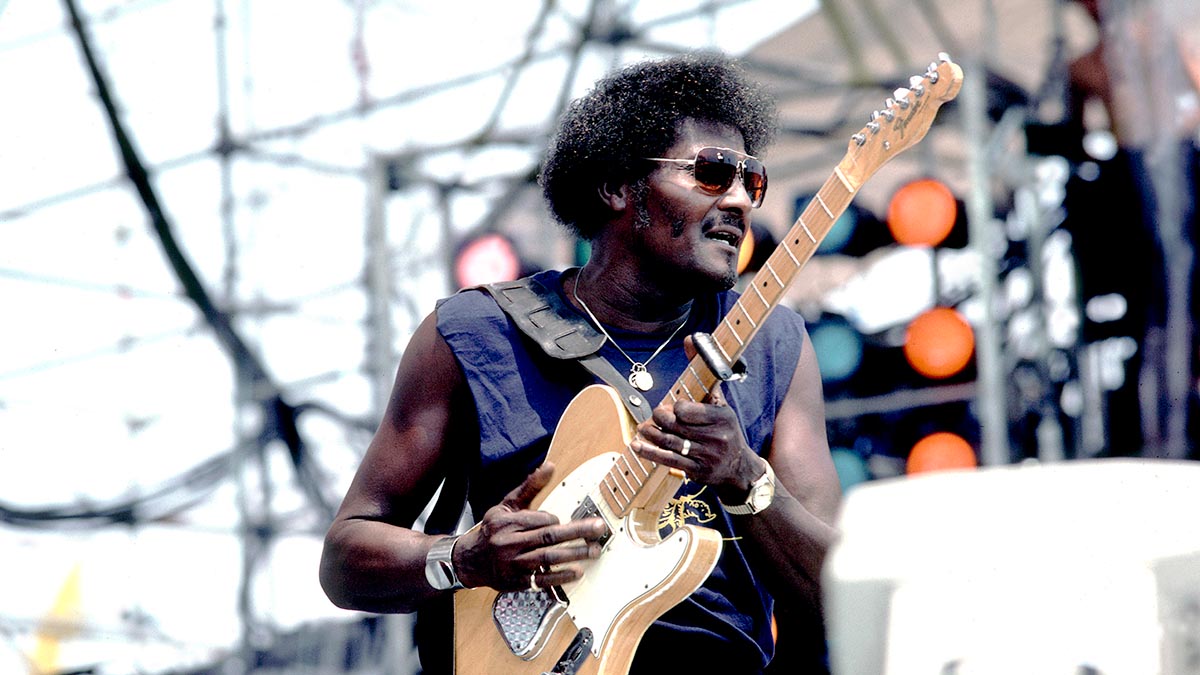How to get more out of fewer notes in a guitar solo
Here are four blues solo ideas that demonstrate how sometimes less is more, reminding us that the space between the notes is music too

We’ve all heard the ‘less is more’ adage… The physical experience of playing can sometimes deceive us, even though we can hear what we’re playing.
Recording and listening back is something we highly recommend – and here’s another situation where listening back without a guitar in your hands might help you develop the sort of style you hope to hear when you pick one up.
Once we’ve achieved a certain amount of fluency and expertise, it can be hard to think and feel as a listener outside of the world of scales, patterns and runs. This isn’t because we’re desperate to show off our chops necessarily, but out of a sense of duty to make something happen and keep it interesting.
Time also goes by more slowly when we’re soloing, especially when we're nervous or unsure, so it’s always worth listening back with the pressure off. We've found this a good way to evaluate details such as vibrato and bends, too.
In more practical terms, we're deliberately limiting what we do here to shape 1 of the C minor pentatonic, usually with any Eb pushed or pulled slightly sharp, as this is quite a ‘major’ 12-bar progression.
We're also resisting any flash stuff with not too many runs quicker than an eighth note/quaver. Hopefully, this contributes a bit more excitement to those little moments where it does happen. I’ve gone with four separate phrases, rather than a whole solo, including an alternative first phrase inspired by the bass part.
Example 1

Taking a deliberately minimalist approach, with long held bends between some staccato accents, this is one of two passes we took at a ‘first phrase’.
Sometimes taking a sparse approach such as this can be more attention-grabbing than a flurry of notes, especially if there’s been a big build up – and you’re good and loud! You’ll want to be confident and precise about bends and pitching. We’re talking about the right kind of attention here.
Example 2

In this second phrase, things are a bit more regular and rhythmic; we want to feel like this is going somewhere, after all.
However, after the little rapid skip from Eb to C in bar 3, We're just holding the root before leaving a bar or so of space before the next phrase, in this case Example 3.
We don’t generally demonstrate leaving space (that would make this job easy, wouldn’t it?), but this seemed like a good time to ‘take a breath’.
Example 3

The D at the beginning of bar 1 is, of course, from outside the C minor pentatonic, but it’s such a good fit over the G that it was impossible to resist. Pretty quickly, We're back to the Eb on the 11th fret, which is pushed slightly sharp.
You may notice, however, that we needn’t have done so, as Eb is the dominant 7th of the F chord, which happens here. We still like the ‘blues-bend’ vibe of it, though.
Example 4

The previous three examples can be put together to make a solo, but here is an alternative take over the first four bars. I’ve gone with another simple melody inspired by the bass line and lifted directly from the C minor pentatonic.
For a flamboyant touch, we've introduced a slide down the bottom E and really dug in on those low notes. You could easily go into Example 2 here without it sounding edited together.
Hear it here
Albert King – The Definitive Albert King
Thanks to this being a compilation, there is ample opportunity to check out a variety of backing bands and styles, including a funky 1974 version of Crosscut Saw. Elsewhere, check out his phrasing over the very major sounding I-IV-V progressions on Don’t Throw Your Love On Me So Strong, The Sky Is Crying and I’ll Play the Blues For You (Pt 1), a minor blues that features a more modern production, but the same principles apply.
Albert Collins – Truckin’ With Albert Collins
Recorded at the tail end of the 60s, it’s interesting to hear Albert Collins’ surprisingly driven tone and confident rhythmic phrasing, leaving lots of spaces. Like Albert King, the guitar is not in standard tuning, but this leads to some interesting phrases that are still perfectly possible in regular EADGBE.
Check out the major blues of Frosty, the economical phrasing with surprising flurries in Thaw Out, and finally the major blues shuffle of Snow Cone II.
Lonnie Mack – Glad I’m In The Band
On this 1969 album you will soon hear that Lonnie Mack certainly knew how to get the most out of the pentatonic and was comfortable over major chords. Hear his excellent phrasing on Save Your Money, not running up and down scales but managing to come up with some memorable phrases. Things get a little more heated on Memphis and Too Much Trouble, but there are still plenty of ideas here that are well worth borrowing.
Get The Pick Newsletter
All the latest guitar news, interviews, lessons, reviews, deals and more, direct to your inbox!
As well as a longtime contributor to Guitarist and Guitar Techniques, Richard is Tony Hadley’s longstanding guitarist, and has worked with everyone from Roger Daltrey to Ronan Keating.
“There are so many sounds to be discovered when you get away from using a pick”: Jared James Nichols shows you how to add “snap, crackle and pop” to your playing with banjo rolls and string snaps
Don't let chord inversions bamboozle you. It's simply the case of shuffling the notes around








![Joe Bonamassa [left] wears a deep blue suit and polka-dotted shirt and plays his green refin Strat; the late Irish blues legend Rory Gallagher [right] screams and inflicts some punishment on his heavily worn number one Stratocaster.](https://cdn.mos.cms.futurecdn.net/cw28h7UBcTVfTLs7p7eiLe.jpg)


